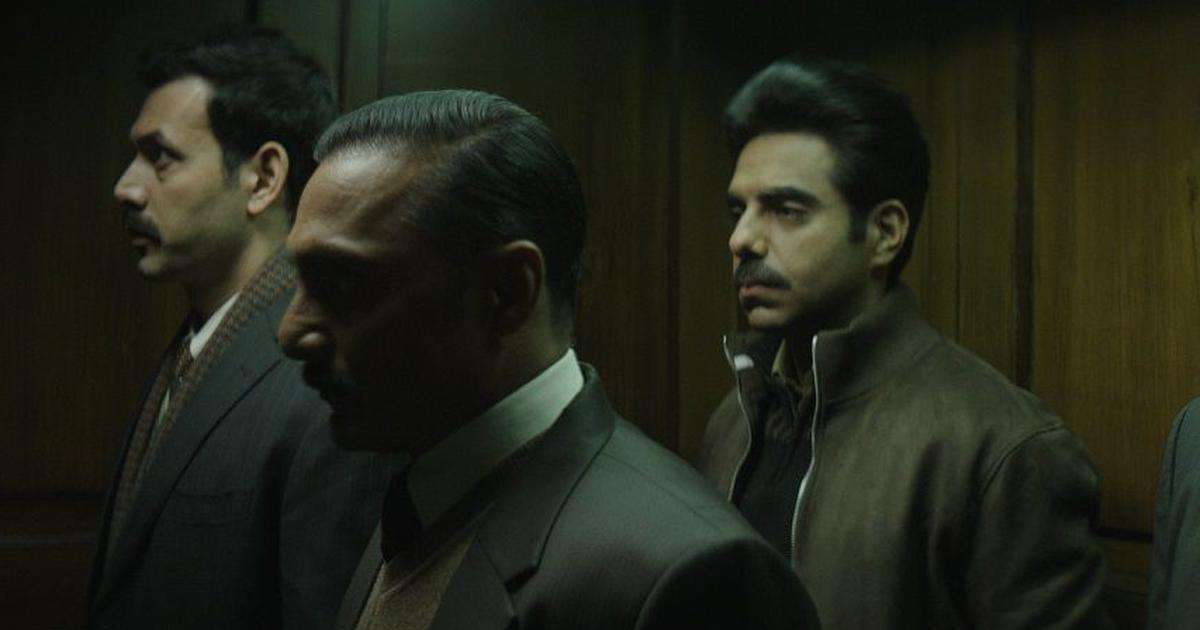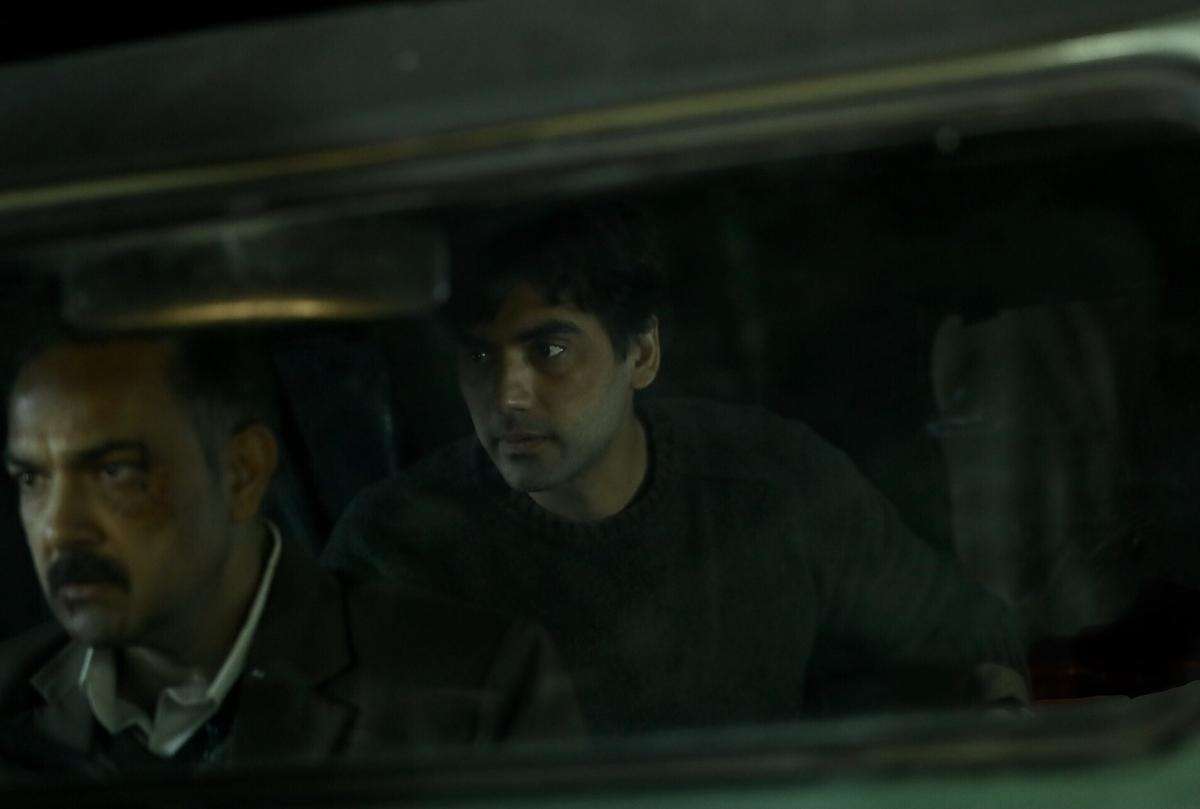The realistic treatment of spy stories—stripping them down of the glitz and glamour, jet-setting off to new tropical locations, and constricting the genre trappings to cold, sterilized rooms, prison walls, or even walled cities in general—is a genre that had been in vogue for a long time. The mainstream adaptability of such stories is challenging, primarily due to the screenplay’s need to balance the aesthetic peaks and the intricate complexities of espionage thrillers.
Veteran screenwriter and director Atul Sabharwal’s “Berlin” (2024) takes heavy inspiration from John Le Carre’s tales of espionage, especially concerning the aesthetics of the film. It is heavily inspired by Tomas Alfredson’s 2011 adaptation of “Tinker Tailor Soldier Spy,” with regards to Hoyte Van Hoytema’s cinematography with a singular light bluish color palette that corresponds to the sickly green color palette that “Berlin” is adorned with, with the trademark yellow of Hoytema also referenced in the night-time sequences and interrogation scenes utilized expertly by Shredutta Namjoshi.
But Namjoshi should also be credited with establishing the world of “Berlin”—the 90s-set India stuck at a crossroads. Liberalization was introduced as a result of a severe payment crisis, a recession, and the dissolution of the Soviet Union, which led to the decline of the Cold War, the introduction of a more service-oriented economy, and the increase in foreign investment.
It is highlighted by the lead character Pushkin’s (Aparshakti Khurana) vocation of a better standard of living, but being drawn to a world of shadows, government buildings evoking brutalist architecture, housing sterilized interrogation rooms, and offices with agents having to insert pins into files for detecting espionage. It is a literal dragging of his character into the world of shadows because of his skill set—the ability to translate sign language—that situates him as a translator to interrogate a deaf young man accused of being a foreign spy.

It is fascinating because, from a narrative and a visual standpoint, the blast of the past feels strangely comforting and attractive in its comforting existence within the chiaroscuro. The presence of the Berlin club as a hub for spies working in different organizations and sharing resources and state secrets is further given a heightened pulpy flavor by the addition of deaf waiters in charge of service—a protective measure such that those same secrets wouldn’t be released into the wild or in the wrong hands.
But Berlin’s thesis statement, through the experience of Pushkin, interrogating Ashok (Ishwak Singh) or through the strained relationship between Pushkin and the head of the Soviet desk, Sondhi (Rahul Bose), brings forth the dilemma of what the truth ultimately is—facts being disseminated or information being recorded based on hearsay that could be manipulated or mutated. It’s that sense of unease and paranoia that DoP Namjoshi, editor Irene Dhar Malik manages to evoke, bringing forth a unique perspective of India in the 90s without the added baggage of either jingoism or the saccharine, the colorful, aspirational world of the rom-coms.
The issue within “Berlin” is the elements it introduces and how it doesn’t choose to move forward with those unique elements but instead chooses the much safer route. I understand the criticism of the convolution of the plot being termed as safe—secret agents being seduced by honeytraps and then racing to cover their tracks—but Berlin’s failure is not going all in with the world-building. The choice to utilize a character disabled by deafness and nonverbality is a fascinating one, and bringing in a translator to interrogate could have been equally fascinating.
It would have brought forth a discussion on how the translator could mutate those facts—explored in just one instance—but not delved deeper or extrapolated. Similarly, while the Berlin club as a concept is fascinating—a form of no-man’s land similar to what the city of Vienna had been in Carol Reed’s “The Third Man,” it isn’t explored with as much fascination as one would expect considering these elements are referenced so heavily. The personal dilemma of the character, or the balancing act of the personal life integrating with the stakes at hand, doesn’t integrate smoothly for Pushkin’s character, even as Sabhrawal tries to include us by giving a snapshot into the normalcy of Pushkin’s life within 90s India, but he sacrifices the unique quirks of the character (Pushkin as an Indian name, etc.) for the exhibition of that normalcy.
A similar issue also occurs in Ashok’s character, where the personal touches feel strangely sprinkled through rather than providing a sufficient dimension. The dimensionality befitting an espionage drama results from the performances at play. Aparshakti Khurana is exceptional as the translator Pushkin Verma, while Ishwak Singh, as the deaf man suspected of being a foreign spy, brings an impish charm and a subtle but devilish flair to the proceedings. On the other hand, Bose as Sondhi is strangely one-note, though nobody is quite as effective as Rahul Bose in depicting oily, smug governmental bureaucracy.

In contrast, the actual case, while convoluted, is surprisingly restrained and feels somewhat lacking in stakes. But Sabrawahal’s vision of his film is perhaps to explore the gravity of such stakes from an outsider’s gaze. Espionage officers playing dress-up and indulging in spy games, trapped in a world of subterfuge that is essentially over and leaving them all in the dust. Perhaps the impact of this subtextual narrative would have been felt if the overall convolution of the case being investigated had been treated with a cavalier sort of dismissal rather than as a genre necessity.
I am the most vocal proponent of the latter, but “Berlin” is one such film where the former would have worked better. After all, considering how the movie tries to glorify the cloak-and-dagger nature of spycraft before pulling it down by depicting the incompetency of trained agents, it feels like a commentary and removal of the rose-tinted glasses for both Pushkin and Ashok. Pushkin’s cynicism by the end makes the film squarely a part of the noir canon.
Sabrawhal’s commentary on the foibles of spycraft through an outsider’s gaze also feels like a meta-commentary on film viewers and their expectations of espionage stories depicted in various forms of media and how much the reality is more paranoia-tinged and more complicated than one affords to an era, especially a decade long past but still recallable. I wish the movie had doubled down on this thematic encapsulation more than the actual plot, but as an Indian film dabbling in serious espionage fare, this is a step in the right direction.






![Blade Runner 2049 [2017] : A Devastating Quest of New Generation Replicant](https://79468c92.delivery.rocketcdn.me/wp-content/uploads/2017/10/blade-runner-2049-2017-lu-1920x1080-768x432.jpg)


